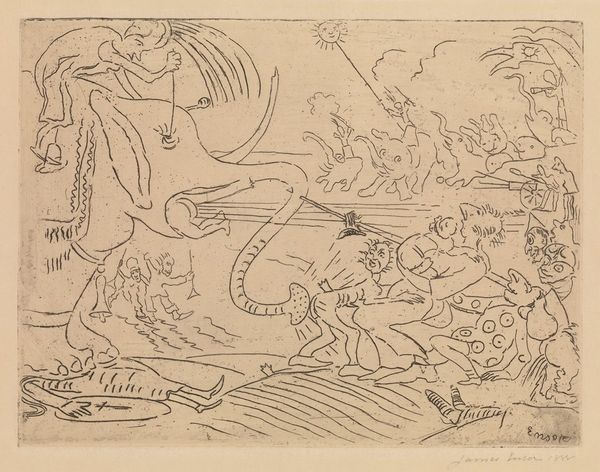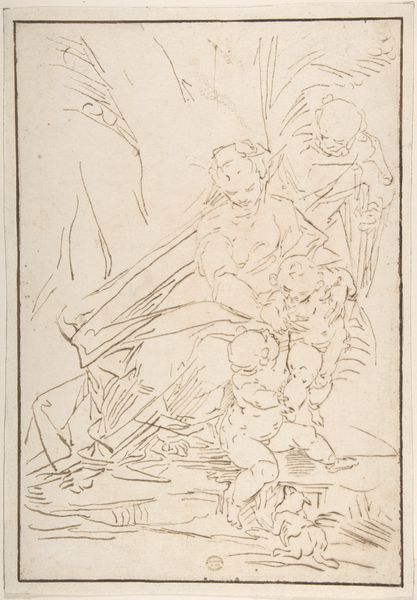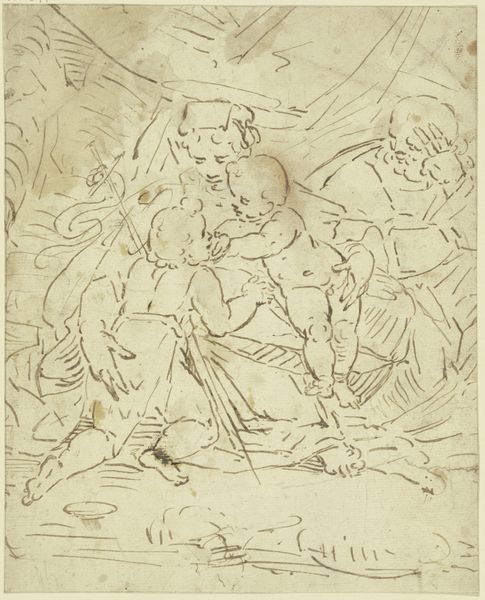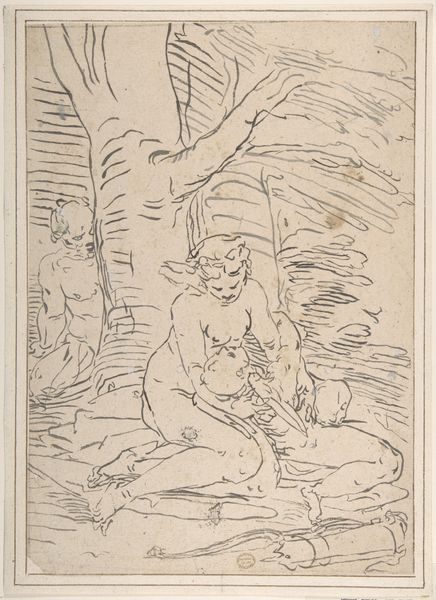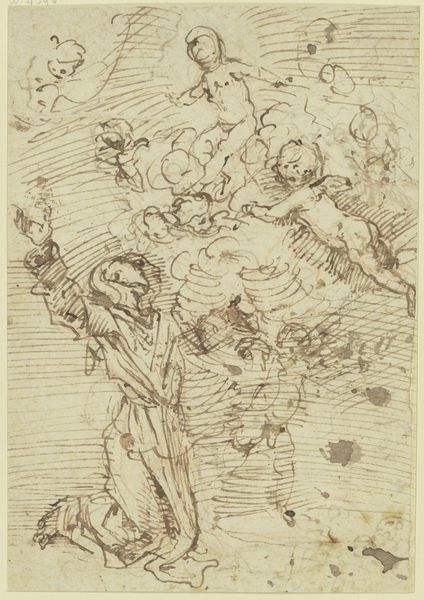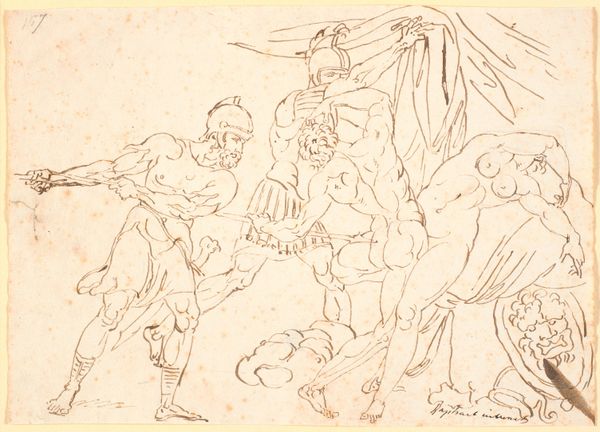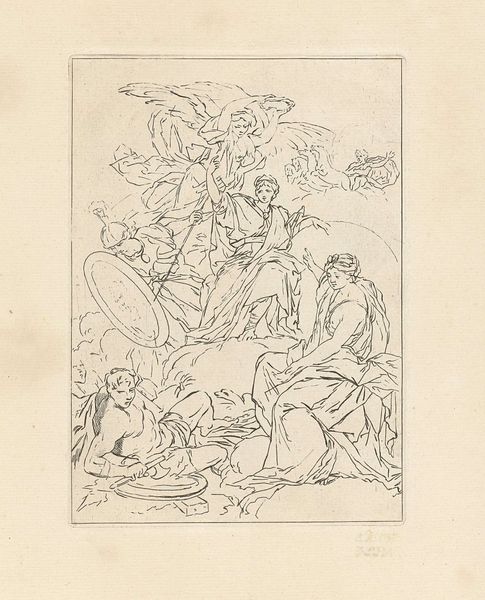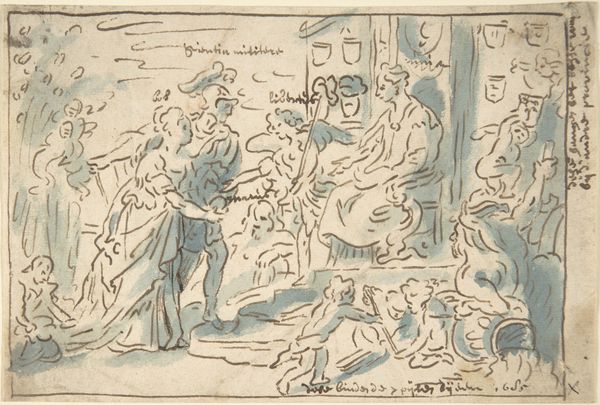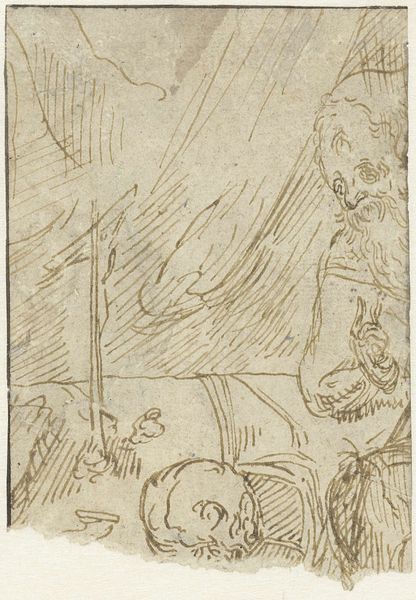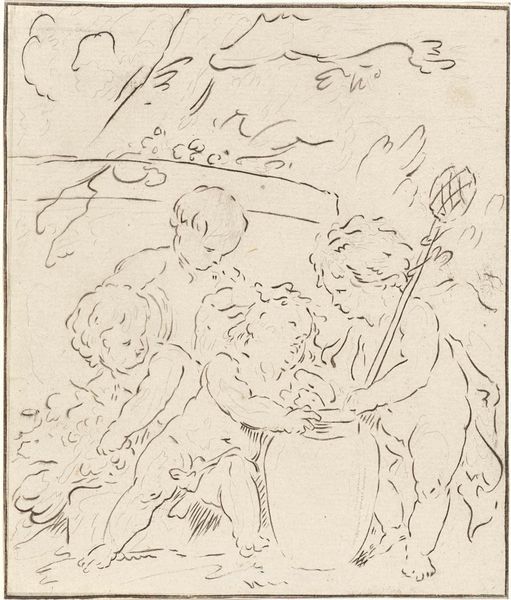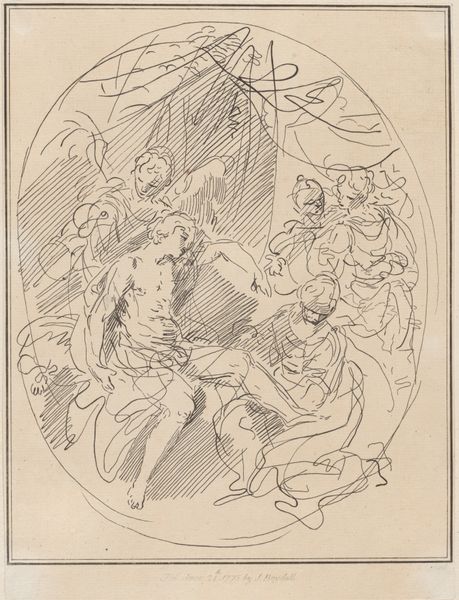
Christ and the Woman of Samaria at the Well 1527 - 1585
0:00
0:00
drawing, ink
#
drawing
#
ink drawing
#
narrative-art
#
landscape
#
figuration
#
11_renaissance
#
ink
#
history-painting
#
italian-renaissance
Dimensions: 14 1/4 x 9 7/8in. (36.2 x 25.1cm)
Copyright: Public Domain
Editor: So, this is "Christ and the Woman of Samaria at the Well" by Luca Cambiaso, created sometime between 1527 and 1585. It's an ink drawing, and the lines are so dynamic! There's a real sense of movement despite it just being ink on paper. How would you interpret the significance of the drawing medium here? Curator: Think about the materials, first. Ink, readily available, cheap—yet capable of such expressiveness. This wasn't necessarily "high art" initially. Drawings often served as studies, preparatory sketches for larger works, made in workshops using locally sourced material, perhaps by less-established artists within Cambiaso’s circle. Consider the economics of artistic production: how does this affect our view of the image? Editor: That's interesting. So, this might have been more of a work in progress, or maybe something more akin to a commodity in the art world of the time? A quick, relatively inexpensive item to produce and sell? Curator: Precisely! And think about what this implies about the subject matter itself. This biblical scene isn't some grand, idealized history painting. It's rendered with a sort of immediacy. The accessibility of the ink translates to a level of approachability in its narrative depiction, especially concerning the woman's figure which subverts the common tropes in religious representation. Is this shift influencing a changing view of consumption within a changing audience during the Renaissance? Editor: I never thought about it like that, connecting the cost of the material to the depiction of religious narratives. It makes me wonder about who could afford this kind of art. Curator: Exactly! Its presence hints at who could potentially participate in artmaking and art ownership. This also leads to who has power over the depiction of the figure. Editor: That gives me a lot to think about regarding how the piece was produced and how that affects our experience viewing it today. Thanks! Curator: Indeed, shifting the lens from solely the religious aspect toward the more accessible materials that render it and to whose benefit reveals fascinating insight to power.
Comments
No comments
Be the first to comment and join the conversation on the ultimate creative platform.
